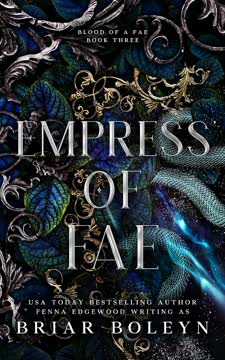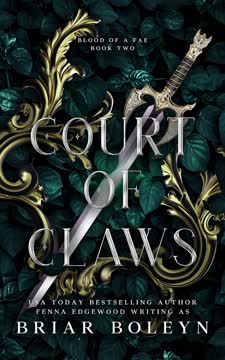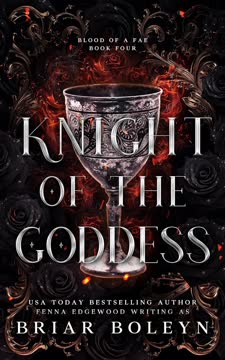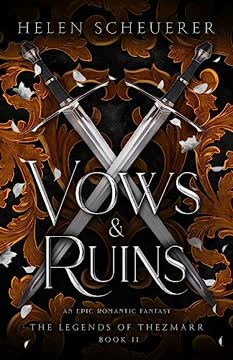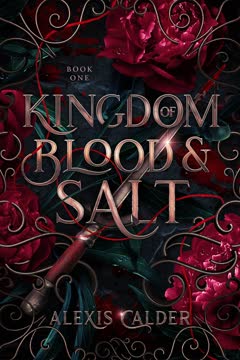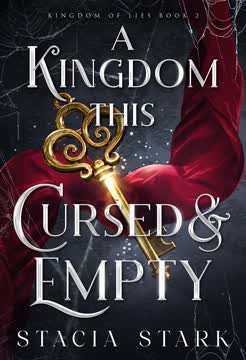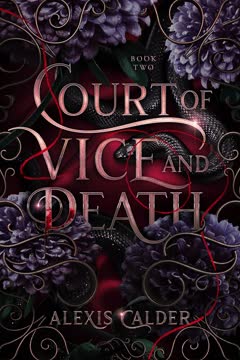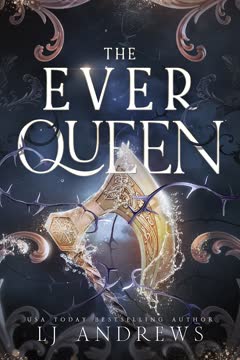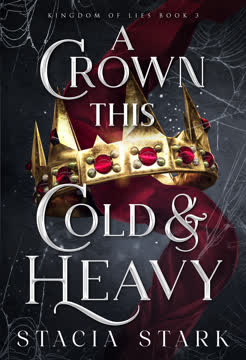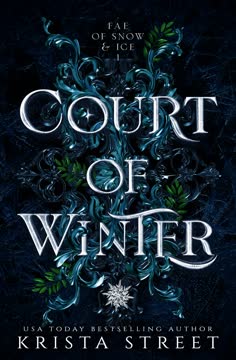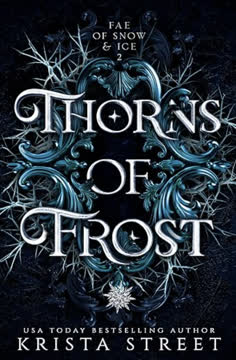Plot Summary
Blood and Betrayal
The story opens with Morgan le Fay, Empress of Myntra, fleeing the dark, treacherous fae court of her husband, Draven. Haunted by the deaths of loved ones and the weight of her unwanted power, Morgan's escape is both a personal rebellion and a catalyst for greater conflict. Draven, left behind, is tormented by guilt and longing, his own court in chaos after Morgan's departure. The Siabra fae, fractured and leaderless, teeter on the brink of war with their ancient enemies, the Valtain. Meanwhile, in Camelot, King Arthur's rule grows ever more tyrannical, his paranoia and cruelty deepening as he seeks to secure his legacy and crush all opposition. The stage is set for a collision of mortal and fae destinies, with Morgan at the heart of the storm.
Fleeing the Fae Court
Morgan, accompanied by the enigmatic mage Javer, escapes through a magical portal, destroying it behind her to prevent pursuit. She arrives in Camelot, battered and changed, only to find her homeland transformed by war and fear. Her return is met with suspicion and uncertainty, as old friends and new enemies struggle to understand her altered appearance and mysterious powers. Morgan's reunion with Lancelet, her once-closest friend, is fraught with pain and unresolved betrayal. The city itself is a shadow of its former self, its people suffering under Arthur's oppressive rule and the looming threat of invasion. Morgan's presence is both a hope and a danger, as she is drawn into the tangled web of court politics and rebellion.
Camelot in Chains
Camelot is a city of hunger, fear, and violence. Arthur's marriage to the mysterious Queen Belisent (secretly Morgan's fae sister, Orcades) has not brought peace, but only further instability. The court is divided, the people restless, and the threat of war with neighboring kingdoms ever-present. Morgan is swept into the resistance led by Merlin, Tyre, and a handful of loyal knights and priests. The Round Table, once a symbol of unity, is now a clandestine council plotting Arthur's downfall. Morgan's return sparks hope among the rebels, but also suspicion—her fae heritage and connection to Draven make her both a potential savior and a possible threat.
The Round Table Reborn
Morgan is forced to confront the ghosts of her past as she reunites with Lancelet, Guinevere, and other survivors of Arthur's purges. The new Round Table is a fragile alliance of outcasts, each scarred by loss and betrayal. Merlin, stripped of her power, guides the group with wisdom and sorrow, while Tyre, the new High Priest, struggles to maintain hope. Morgan's uncle, Caspar, reveals his own fae lineage and the secrets behind Morgan's transformation. The rebels plot to rescue Kaye, Morgan's younger brother and Arthur's heir, and to reclaim Excalibur, the legendary sword now in Arthur's possession. The bonds of friendship and loyalty are tested as the group prepares for open rebellion.
Shadows of the Past
Morgan's journey is haunted by memories of violence and loss—her father's abuse, her complicity in Arthur's rise, and the deaths of those she loved. Draven, across the sea, is similarly tormented by his past and his inability to protect Morgan. The two are bound by a magical mating bond that transcends distance, their dreams and desires bleeding into one another's reality. The legacy of the fae—ancient curses, stolen children, and the power of the grail—looms over all. Prophecies speak of a child born in spring who will bring about the death of kings, and Morgan fears her own role in the coming cataclysm.
The Sword and the Grail
Excalibur and the grail are more than mere symbols—they are weapons forged by gods, capable of reshaping the fate of kingdoms. Arthur, obsessed with securing his rule, seeks to unlock their secrets through blood sacrifice and dark rituals. Orcades, as Queen Belisent, manipulates events from behind the scenes, her own motives hidden even from Morgan. The grail, stolen and passed between courts, is the key to both fae and mortal destinies. Morgan's unique connection to these artifacts makes her both a target and a potential savior, as she struggles to master their power and prevent them from falling into the wrong hands.
The Tyrant King's Games
The king's paranoia and cruelty reach new heights as he orchestrates deadly tournaments, forcing prisoners and traitors to fight for their lives with Excalibur. The sword, however, refuses to serve any but its true master, and its power becomes a curse as much as a blessing. The spectacle of violence is both a distraction and a warning to the people of Camelot. Morgan, forced to play the role of loyal sister, plots with the rebels to undermine Arthur's rule. Fenyx, Arthur's sadistic general, emerges as a new and terrifying threat, his own ambitions fueled by stolen fae magic and a hunger for power.
Rebellion Ignites
The city erupts in chaos as the rebels, led by Guinevere and Galahad, launch a daring rescue during one of Arthur's tournaments. Lancelet, wounded but unbroken, becomes a symbol of hope as she wields Excalibur against the monstrous glatisant. The people, inspired by the rebels' courage, rise up against Arthur's soldiers. Draven, racing across continents on the backs of exmoors, is drawn to Morgan by the strength of their bond. The lines between mortal and fae, friend and foe, blur as the battle for Camelot reaches its fever pitch. Sacrifice and loss are inevitable, but so too is the possibility of redemption.
The Bond Unbroken
Morgan and Draven's connection is both a source of strength and vulnerability. Their shared dreams become a sanctuary from the horrors of war, a place where they can be truly themselves. The mating bond, forged in blood and fire, allows them to share power and heal one another's wounds. But it also makes them targets—Fenyx, wielding stolen fae magic, seeks to break their bond and claim Excalibur for himself. Morgan's struggle to master her abilities and accept her role as empress is mirrored by Draven's own journey to reconcile his violent past with his love for her. Together, they are more than the sum of their parts—a force capable of changing the world.
The Tournament of Death
Arthur's final tournament is a blood-soaked nightmare, as prisoners are forced to fight a monstrous glatisant with Excalibur. The sword, loyal only to Morgan, refuses to serve the unworthy, and the arena becomes a slaughterhouse. Lancelet's triumph with the blade is met with betrayal, as she is struck down by Arthur's men. The rebels seize the moment to launch their uprising, and the city descends into chaos. Morgan, captured and tortured by Fenyx, is forced to confront the depths of her own power and the true cost of vengeance. The prophecy of the child of spring looms ever closer, as the fate of Camelot hangs in the balance.
Sacrifice and Prophecy
The city burns as Arthur, driven by fear and prophecy, orders the massacre of all infants born in spring. Orcades, in hiding, gives birth to Medra, the prophesied child, and dies in Morgan's arms. Kaye, used as a blood sacrifice in a dark ritual, is saved by the self-sacrifice of Javer, the penitent mage. Morgan, with Draven at her side, confronts Fenyx in a final, brutal showdown, destroying the stolen fae magic and avenging the dead. The prophecy is fulfilled as Arthur, blinded by Guinevere, faces justice at the hands of the invading armies. The cost of victory is immense—lives lost, innocence destroyed, and the future uncertain.
The Fall of Arthur
Arthur, once king and brother, is executed by the armies of Tintagel and Lyonesse. Camelot falls, its sovereignty lost, and the throne passes to Kaye, the last surviving Pendragon. The city mourns its dead and struggles to come to terms with the horrors committed in its name. Morgan, now empress and regent, must navigate the treacherous waters of peace and reconstruction. The alliances forged in blood and fire are fragile, and the threat of new enemies—both mortal and fae—looms on the horizon. The legacy of the sword, the grail, and the child of spring remains unresolved, as the world stands on the brink of a new age.
The Price of Power
In the aftermath of war, Morgan and Draven gather their allies at the Round Table, forging a new order from the ashes of the old. The peace is uneasy, as the wounds of betrayal and loss run deep. The question of what to do with the sword, the grail, and Medra—the child of prophecy—hangs over all. Morgan, haunted by guilt and the weight of her choices, must decide whether to embrace her destiny or forge a new path. Draven, too, must come to terms with his own darkness and the responsibilities of leadership. Together, they face the challenge of building a future that honors the sacrifices of the past.
The Empress Ascends
Morgan, now Empress of Myntra and regent of Pendrath, stands at the threshold of a new era. With Draven at her side, she seeks to unite mortal and fae, forging alliances that transcend old hatreds. The Round Table is reborn as a council of equals, dedicated to justice and peace. The threat of the Valtain and the legacy of Gorlois le Fay remain, but Morgan is no longer alone—her friends, her mate, and her newfound family stand with her. The child Medra, symbol of hope and danger, is entrusted to their care. The future is uncertain, but for the first time, it is theirs to shape.
The Child of Spring
The story ends with the birth of Medra, the child of spring, whose existence has shaped the fate of kingdoms and the lives of all who love her. Morgan, Draven, and their allies gather in peace, mourning the dead and celebrating the possibility of a better world. The sword and the grail, symbols of both destruction and salvation, are entrusted to the next generation. The lessons of the past—of love, sacrifice, and the cost of power—echo into the future. The Empress of Fae stands ready to face whatever comes next, her heart and her kingdom forever changed.
Characters
Morgan le Fay
Morgan is the emotional and moral center of the story—a woman torn between worlds, haunted by guilt, loss, and the burden of power. Her journey is one of self-discovery and reluctant leadership, as she is forced to confront her own darkness and the legacy of her family. Morgan's relationships—with Draven, her siblings, and her friends—are fraught with betrayal, longing, and the hope of redemption. Her fae heritage and magical abilities make her both a target and a savior, and her struggle to accept her role as empress is mirrored by her desire for love and belonging. Morgan's psychological arc is one of moving from self-doubt and trauma to acceptance and agency, as she learns to wield her power for the good of others.
Kairos Draven Venator
Draven is a study in contrasts—a ruthless fae prince with a violent past, yet capable of deep love and vulnerability. His bond with Morgan is both a source of strength and a wound, as he grapples with guilt over past losses and the fear of failing her. Draven's journey is one of atonement and self-mastery, as he seeks to reconcile his brutal upbringing with his desire to build a better world. His loyalty to Morgan is absolute, and his willingness to sacrifice for her is both his greatest virtue and his deepest flaw. Draven's psychological complexity lies in his struggle to balance love and violence, power and mercy.
Arthur Pendragon
Arthur is a deeply flawed and ultimately tragic figure—a king consumed by paranoia, ambition, and the scars of childhood abuse. His descent into tyranny is both horrifying and pitiable, as he becomes the architect of his own destruction. Arthur's relationships—with Morgan, Kaye, and Orcades—are marked by betrayal and the inability to break free from the cycle of violence inherited from their father. His psychological arc is one of self-destruction, as he is manipulated by darker forces and ultimately forced to confront the consequences of his actions. Arthur embodies the dangers of unchecked power and the tragedy of a soul lost to fear.
Orcades / Queen Belisent
Orcades is Morgan's enigmatic fae sister, hiding in plain sight as Arthur's queen. Her motives are layered—part vengeance, part survival, part prophecy. She is both a manipulator and a victim, using her beauty and power to shape events while haunted by her own past and the prophecy of her child. Orcades' relationship with Morgan is fraught with rivalry, affection, and the shared trauma of their father's legacy. Her psychological complexity lies in her willingness to sacrifice everything for her child and her people, even as she remains an outsider in both worlds.
Lancelet de Troyes
Lancelet is Morgan's childhood companion, transformed by trauma and loss into a fierce, wounded warrior. Her journey is one of survival and the struggle to reclaim her sense of self after betrayal and violence. Lancelet's loyalty to Morgan and her love for Guinevere are sources of both strength and vulnerability. Her psychological arc is one of moving from bitterness and self-loathing to acceptance and hope, as she learns to trust again and to fight for something greater than herself.
Guinevere of Lyonesse
Guinevere is a symbol of resilience and quiet strength—a woman who endures unspeakable abuse and emerges as a leader of the resistance. Her relationship with Lancelet is a lifeline, offering both solace and the possibility of healing. Guinevere's psychological journey is one of reclaiming agency and finding purpose in the face of trauma. Her role as the new High Priestess and her ability to inspire others make her a key figure in the struggle for Camelot's soul.
Kaye Pendragon
Kaye is the youngest Pendragon, caught in the crossfire of his siblings' ambitions and the violence of their world. His innocence and vulnerability make him both a target and a symbol of the future. Kaye's psychological arc is one of survival and the loss of innocence, as he is used as a pawn in Arthur's dark rituals and ultimately saved by the sacrifices of others. His fate is a reminder of what is at stake and the possibility of renewal.
Fenyx
Fenyx is Arthur's right hand and the embodiment of mortal ambition corrupted by fae magic. His hunger for power and cruelty make him a terrifying antagonist, and his obsession with Morgan adds a layer of psychological menace. Fenyx's use of stolen fae abilities and his willingness to betray anyone for his own gain make him a symbol of the dangers of unchecked ambition and the perversion of power.
Caspar Starweaver
Caspar is Morgan's uncle and a master of secrets, his own fae heritage hidden beneath a mask of loyalty and cunning. His role as spymaster and advisor is complicated by guilt over past betrayals and the burden of knowledge. Caspar's psychological arc is one of atonement and the struggle to protect those he loves, even as his actions have unintended consequences.
Javer
Javer is a complex figure—once a wielder of power in the fae court, now a penitent seeking redemption. His loyalty to Morgan is born of guilt and the desire to atone for past failures. Javer's ultimate sacrifice to save Kaye is a testament to the possibility of change and the power of selflessness. His psychological journey is one of moving from self-interest to true service.
Plot Devices
Prophecy and Destiny
The narrative is driven by the prophecy of a child born in spring who will bring about the death of kings. This prophecy, echoing Arthurian legend and biblical massacre, is both a source of hope and a catalyst for horror. It motivates Arthur's descent into madness, Orcades' secret schemes, and Morgan's struggle to accept her role. The prophecy is a classic device for foreshadowing and raising stakes, but here it is complicated by ambiguity and the possibility of self-fulfilling tragedy.
Magical Artifacts
Excalibur and the grail are not just symbols but active agents in the story, their power and loyalty shifting according to the worthiness of those who wield them. Their presence drives much of the action—Arthur's rituals, the tournaments, the rebellion, and the final confrontation. The artifacts serve as both MacGuffins and mirrors, reflecting the inner state of their wielders and the moral choices at the heart of the story.
Dual Narrative and Dream-Bond
The story alternates between Morgan and Draven, their physical separation bridged by a magical mating bond that allows them to share dreams, emotions, and even power. This device deepens the emotional stakes, allows for intimate character development, and provides a means for exposition and foreshadowing. The dream-bond is also a metaphor for the ways trauma and love connect people across distance and difference.
Rebellion and Revolution
The narrative structure follows the classic arc of rebellion—oppression, secret resistance, open uprising, and the uncertain aftermath. The Round Table is reimagined as a council of outcasts, and the rebellion is as much about reclaiming agency and identity as it is about defeating a tyrant. The device allows for a wide cast of characters, shifting alliances, and the exploration of themes of justice, sacrifice, and the cost of change.
Psychological Trauma and Healing
The story is deeply invested in the psychological scars of its characters—abuse, betrayal, loss, and the struggle for self-acceptance. Healing is not easy or complete, and the narrative resists simple redemption. Instead, it explores the ways people survive, adapt, and find meaning in the aftermath of violence. The use of trauma as a plot device is both a source of tension and a means of deepening character relationships.
Analysis
Empress of Fae is a sweeping, emotionally charged fantasy that interrogates the myths of power, destiny, and heroism. By centering Morgan le Fay as a complex, traumatized, and ultimately empowered protagonist, the novel subverts traditional narratives of female villainy and victimhood. The story is unflinching in its depiction of violence—both personal and political—and refuses easy answers about justice or redemption. The use of prophecy and magical artifacts is both homage and critique, highlighting the dangers of seeking power for its own sake and the ways in which history is shaped by those who wield it. The novel's greatest strength lies in its psychological depth and its insistence on the possibility of healing and hope, even in the aftermath of unimaginable loss. The lessons are clear: power must be tempered by compassion, the past cannot be escaped but can be transformed, and true change requires both sacrifice and solidarity. In the end, Empress of Fae is a story about forging a new world from the ashes of the old—one where love, agency, and justice are hard-won but fiercely defended.
Last updated:
Review Summary
Empress of Fae receives mostly positive reviews, with readers praising the character development, world-building, and plot twists. Many appreciate the darker tone and political intrigue compared to previous books. The relationship between Morgan and Draven remains a highlight for fans. Some criticize pacing issues and character decisions. Overall, readers find the book engaging and eagerly anticipate the fourth installment. The spice level and writing quality are noted to have improved. A few reviewers express disappointment with certain plot elements or character arcs.
